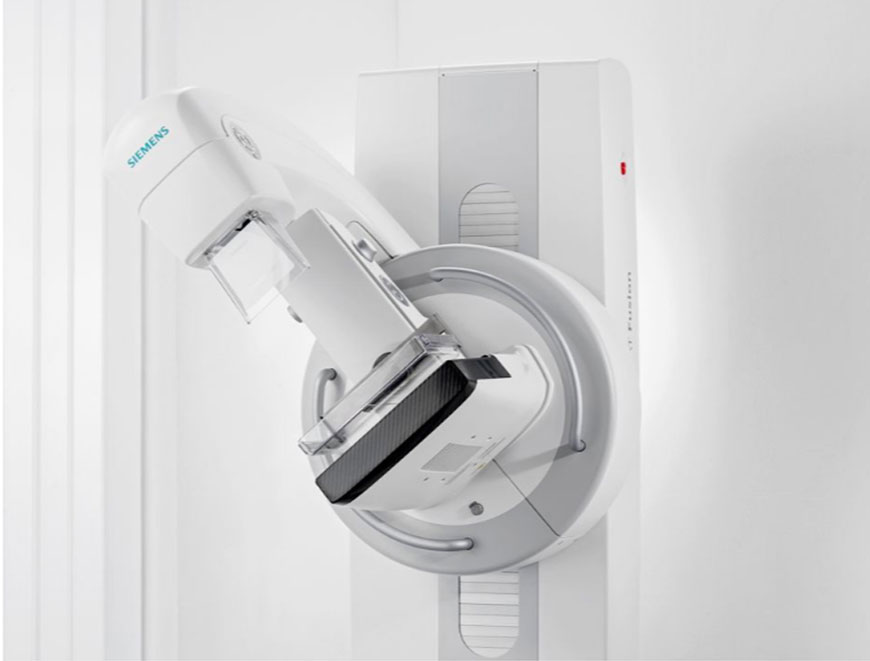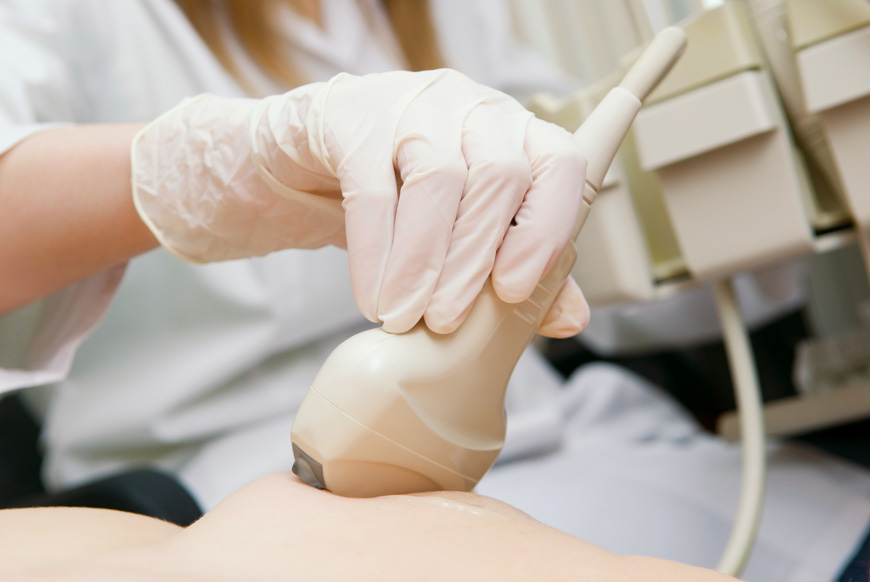We provide a full range of diagnostic breast services for our female patients including:
1. Digital Mammography with Computer Aided Detection (CAD)
2. Breast Ultrasound
3. Ultrasound Guided Fine Needle Aspiration
4. Ultrasound Guided Breast Biopsy
1. Digital Mammography with CAD
What is Mammography?
Mammography is a specific type of low dose x-ray used to look at the breast. A screening mammogram is performed even when there is no breast complaint, for the purpose of early cancer screening. A diagnostic mammogram is performed when there is a specific breast complaint, to investigate the particular area of interest. After looking at the mammogram, the technologist then decides if extra views are needed to focus on a particular region or if another tool, like ultrasound, is needed for further evaluation.
Our Equipment for Mammography
At Lifescan Imaging, we have a Full Field Digital Mammography (FFDM) machine which:
- decreases the radiation dose
- shortens the time taken to perform mammography
- enhances the detection of micro-calcifications in the breast (early breast cancer usually presents as micro-calcifications i.e. tiny calcium dots)
We also utilize Computer Aided Detection (CAD) software, which is an FDA-approved technology, that helps radiologists analyse your mammogram. It acts as a second pair of eyes, very much like a “spellchecker”, helping to identify certain features in a mammogram that may need further evaluation. Studies have shown that CAD increases the sensitivity of picking up a cancer by about 10%.


2. Breast Ultrasound/Sonography
Ultrasound uses high-frequency sound waves to look at the breast. No radiation is involved. It is useful as a diagnostic tool, helping to further evaluate lumps or other findings that are not well-characterised on mammography. It is very useful in differentiating between a solid mass and a cyst within the breast.
3. Ultrasound Guided Breast Biopsy
Local anaesthetic is given and a slightly bigger needle is used to remove some tissue from a lump for examination under a microscope.
4. Ultrasound Guided Fine Needle Aspiration
Local anaesthetic is given and a small needle (similar to the ones used for drawing blood) is used under ultrasound guidance, to remove cells from a lump or fluid from a cyst for diagnostic purposes. Ultrasound guided fine needle aspiration can also be used for therapeutic purpose, relieving the pain caused by big cysts.
Frequently Asked Questions
When is the best time to go for mammography?
During the peri-menstrual period, the nipple is more sensitive and engorged. It would be best to avoid the pre-menstrual/menstrual period and have the mammogram performed about 1 to 2 weeks after the menstruation period.
What should I wear?
It is best to wear 2 piece clothing i.e. a top and a pair of pants so as to ease the process of removing the top during mammography.
Why can’t I apply powder, deodorant, cream or perfume when I go for mammography?
The powder, deodorant, cream or perfume may cause artifacts on the mammography image. The artifacts appear as white spots on the mammography film which may mimic microcalcifications that may be a representation of early cancer.
Once I have a normal mammogram, am I safe from breast cancer?
Mammography has a false negative rate of about 10% . This means that up to about 10% of normal mammograms may hide a small cancer, especially in Asian women in whom the breast tissue is very dense. At Lifescan Imaging, we have Full Field Digital Mammography (FFMD) and Computer Aided Detection (CAD) software to help pick up small early cancers.
Why do I have to undergo breast screening?
Mammography is the only imaging test that has been shown to reduce mortality (death rate) by about 30%. The Singapore Ministry of Health recommends that all women 40 years old and above should undergo screening mammography.
Why do I need to bring my old films when I go for a mammogram?
It is important to bring all your old films, especially if it has been performed in another imaging centre as small, subtle changes can be better demonstrated when compared to previous mammograms.
Why do extra views of my breast sometimes need to be taken?
After reviewing your mammogram, in about 10% of cases, more views may be ordered by the radiologist to evaluate any indeterminate findings.
Why do I need to go for biopsy?
Findings on mammograms or breast ultrasound may be non-cancerous (simple cysts etc) or some findings are typical for cancer (irregular spiculated mass). Sometimes however, findings are indeterminate. When the findings are indeterminate or inconclusive, a recommendation for biopsy (removal of some tissue) is made.
When will the biopsy results be ready?
Results are usually available in 1 to 2 working days.


